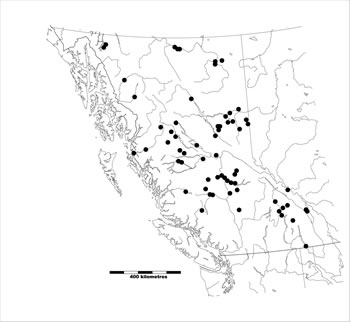Groundhogs usually live from two to three years, but can live up to six years in the wild. In captivity, groundhogs can exceed this limit; by example, the 22-year-old Wiarton Willie may indicate the maximum lifespan. Young groundhogs are often at risk for predation by snakes, which easily enter the burrow.
|
Usually groundhogs breed in their second year, but a small proportion may breed in their first. The breeding season extends from early March to mid- or late April, after hibernation. A mated pair remains in the same den throughout the 28-32 day gestation period. As birth of the young approaches in April or May, the male leaves the den. One litter is produced annually, usually containing 2-6 blind, hairless and helpless young. Young groundhogs are weaned and ready to seek their own dens at five to six weeks of age.
|
Mostly herbivorous, groundhogs primarily eat wild grasses and other vegetation, and berries and agricultural crops when available. Groundhogs also eat grubs, grasshoppers, insects, snails and other small animals, but are not as omnivorous as many other sciurids.
|
Groundhogs are excellent burrowers, using burrows for sleeping, rearing young, and hibernating. The average groundhog has been estimated to move approximately 1 m³ (35 cubic feet), or 320 kg (700 pounds), of dirt when digging a burrow. Though groundhogs are the most solitary of the marmots, several individuals may occupy the same burrow. Groundhog burrows usually have two to five entrances, providing groundhogs their primary means of escape from predators. Burrows are particularly large, with up to 45 feet (14 m) of tunnels buried up to 5 feet (1.5 m) underground, and can pose a serious threat to agricultural and residential development by damaging farm machinery and even undermining building foundations.
Groundhogs are one of the few species that enter into true hibernation, and often build a separate "winter burrow" for this purpose. This burrow is usually in a wooded or brushy area and is dug below the frost line and remains at a stable temperature well above freezing during the winter months. In most areas, groundhogs hibernate from October to March or April, but in more temperate areas, they may hibernate as little as 3 months. To survive the winter, they are at their maximum weight shortly before entering hibernation. They emerge from hibernation with some remaining body fat to live on until the warmer spring weather produces abundant plant materials for food.
Outside their burrow, individuals are alert when not actively feeding. It is common to see one or more nearly-motionless individuals standing erect on their hind feet watching for danger. When alarmed, they use a high-pitched whistle to warn the rest of the colony. Groundhogs may squeal when fighting, seriously injured, or caught by an enemy. Other sounds groundhogs may make are low barks and a sound produced by grinding their teeth.
|
Predators include the Coyote, Red Fox and Bocat, plus raptors.
|
|
